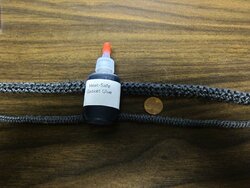fire_man
Minister of Fire
I think the adhesive comes in a small plastic bottle and says "heat safe gasket glue" - that's what I got with my cooktop.
The big calk tube with gray gritty stuff is furnace cement. That stuff is neat, it's soapstone dust mixed with furnace cement and is really sticky.
The big calk tube with gray gritty stuff is furnace cement. That stuff is neat, it's soapstone dust mixed with furnace cement and is really sticky.


